The Subconscious Mind – What Is A Subconscious?
Key Points:
- Subconsciousness contains all thoughts, memories, and processes that are not currently in focal awareness, but can be brought forward if desired.
- Non-conscious processes have been found to activate different neural pathways than conscious ones.
- The subconscious mind does not physically exist – it is a conceptual way to represent cognitive processes that occur outside conscious awareness.
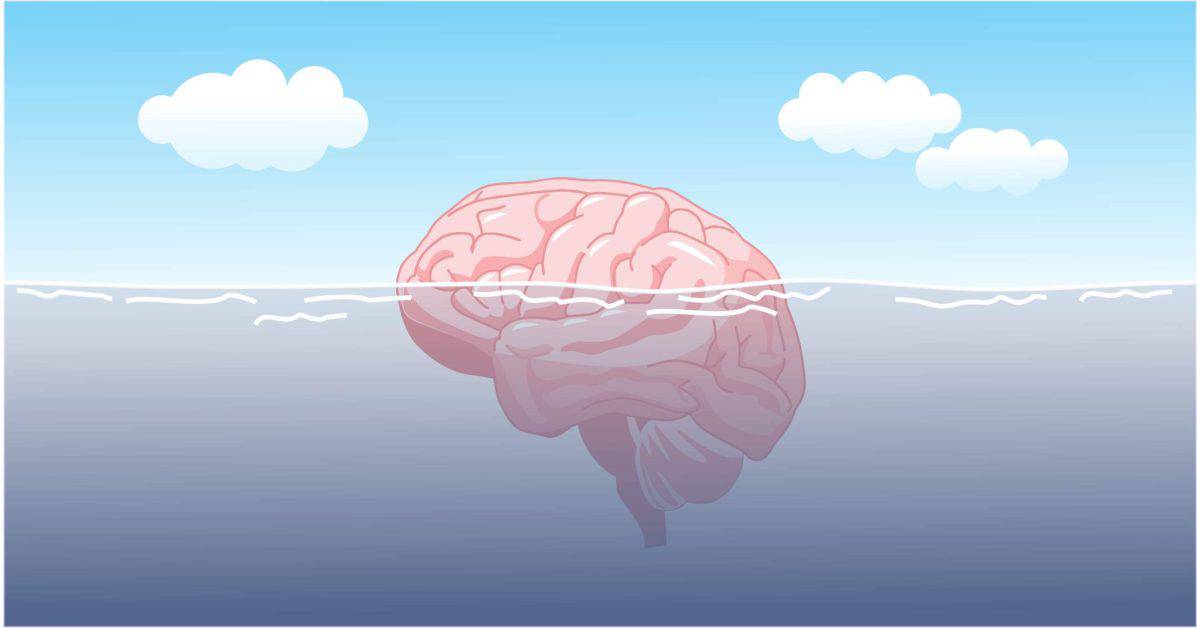
While many relate the subconscious mind to the now outdated Freudian psychoanalytic theory, the possibility of a non-conscious mind extends as far back as AD 130 to the Greek physician Galen who recognized the apparent ability of the mind to induce unconscious inferences.
Since then, numerous theories about the subconscious mind have come and gone and spanned many disciplines, from the divine and spiritual to the neurological.
Cognitive and neural sciences are now entering an age where it is possible to monitor brain activity in search of non-conscious processing.
This article will explain what subconsciousness is, whether a subconscious mind exists, what current scientific investigation currently reveals, and what possibilities there might be for us to influence and utilize its potential power.
What is the Subconscious?
Part of the problem of evaluating the subconscious is in its myriad definitions. Each branch of science and philosophy will have a slightly different interpretation depending on its boundaries and uses.
The most common definition is psychological, where the subconscious represents the part of the mind that is not currently in focal awareness, covering the many thoughts, feelings, and memories outside of our conscious awareness.
Even the term “mind” can be highly subjective, with materialists believing that the mind is an “illusion” created by the brain to simplify complex environments, similar to the operating system of a computer.
Regardless, subconsciousness (as a concept at least) can be thought of as any thoughts, feelings, or emotions existing outside your conscious awareness.
Subconscious events can manifest in many ways, particularly memories, beliefs, and fears you do not directly choose to have or understand.
Many manifestations are small, such as a song you haven’t listened to in years triggering a childhood memory. Others can be much more severe, such as past traumatic events.
Childhood traumas, for example, are associated with greater rates of PTSD, PTSS, depression, anxiety, antisocial behaviors, and a greater risk for alcohol and substance use disorders.
Why do we Need a Subconscious Mind?
Carl Jung, one of the pioneers of analytical psychology in the early 1900s, believed there to be a limit to what can be held in conscious focal awareness.
Our brain operates through synapses, minuscule pockets of space between two cells where messages are transferred through electrical chemical impulses.
The human brain contains around 100 billion neurons, each connected with 10,000 other neurons to produce a mind-boggling 1,000 trillion synapses, more than the estimated number of planets in the galaxy.
Despite this impressive size, we are still limited by whatever processing power these neurons and synapses produce.
Cognitive thought requires immense mental energy. Daydreaming, for example, can be so intense that we can get completely lost in our thoughts.
Multitasking becomes increasingly more difficult the more we try to do it because of our limited cognitive resources. In fact, many believe we cannot effectively focus on more than one significant task at a time.
The brain has evolved to become as efficient as possible, and by transferring some of the easier and more repeatable tasks away from our limited conscious processors, the brain can free up more energy for more pressing tasks. This is the role of non-conscious processing, commonly referred to as the subconscious mind.
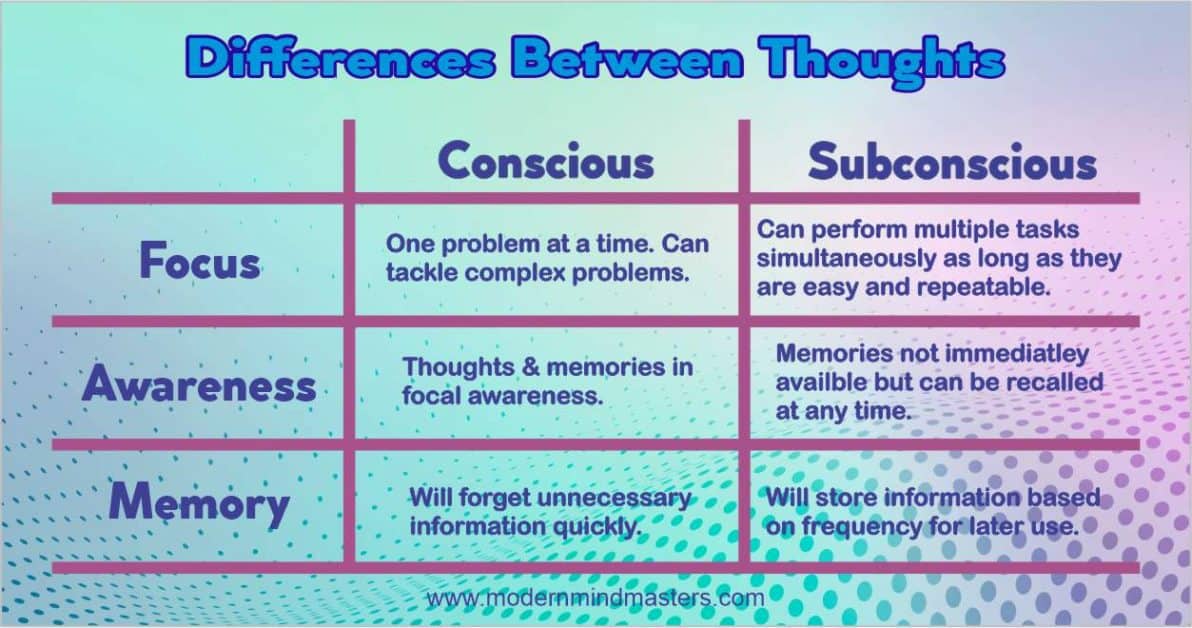
The Subconscious Frees-up Processing Power
We can think of consciousness as similar to a computer’s RAM (random access memory), which serves as a computer’s short-term memory by holding data that a PC requires to operate efficiently.
Typically, RAM is about 8GB of storage, just 8% of the total memory for a typical computer with a 1 TB hard drive. The data on the RAM, however, is accessible 4.5 times faster than that stored on the hard drive (our metaphoric subconscious).
Only the most essential information for immediate tasks is stored in the RAM. The rest, which is not so critical or frequently used, resides in the hard drive until requested.
Similarly, only the information required for immediate tasks, such as cooking, working, and driving, is stored in your consciousness. The rest lies in your subconsciousness, ready to be called upon when quickly needed.
Carl Jung believed that since there is a limit to what can be held in conscious focal awareness, an alternative storehouse of knowledge and prior experience is needed.
Here, traditional psychology and neuroscience are converging. It seems that conscious cognitive power is a finite resource, where the subconscious represents those other parts of the brain that store this information in reserve.
Subconscious vs. Unconscious
There is much confusion about the terms subconscious and unconscious, and the two are often used interchangeably where they should be distinguished. Freud differentiated between them in his now infamous three-mind model:
Freud's Three-Mind Model
- The Conscious mind – defines all thoughts and actions within our awareness.
- The Subconscious/Preconscious – defines all reactions and automatic actions we can become aware of when we choose to.
- The Unconscious – defines all past events and memories, though at times inaccessible to us no matter how hard we try to remember to bring things up. Often these are intensely negative memories stored in the brain and can affect our thoughts and actions without our conscious awareness.
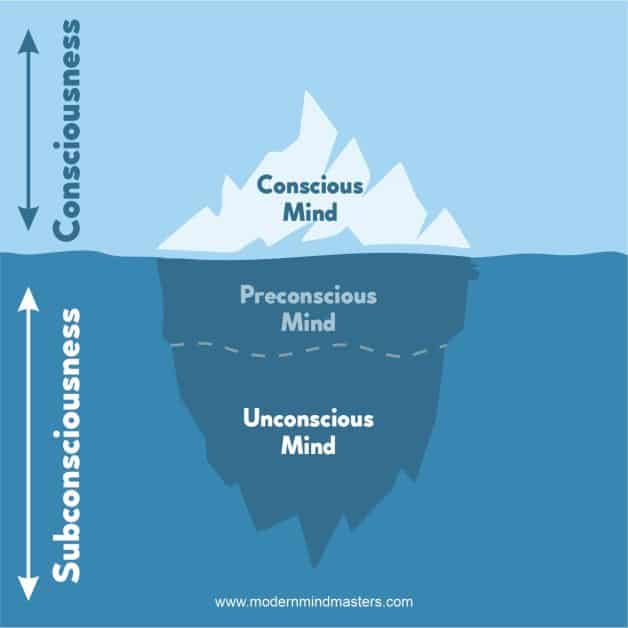
While Freud used the term subconscious in 1893, he later abandoned the term in favor of the unconscious because, in his opinion, it failed to differentiate whether thoughts and feelings occurred in the unconscious or preconscious mind.
American historian Peter Gay states in his book “Freud: A Life For Our Time” that using the term subconscious where unconscious is meant is “a common and telling mistake” and “when subconscious is employed to say something ‘Freudian’, it is proof that the writer has not read [their] Freud”.
When talking specifically about the unconscious, that is, thoughts and memories that are not directly accessible to us but can be triggered by certain conditions, using the term subconscious instead is technically incorrect.
But when referring to the subconscious in general, that is, thoughts and feelings outside of our conscious awareness, it acts as a catch-all term for cognitive processing of what we are not unaware of. It is a conceptual term used to describe thoughts beyond consciousness at a general level.
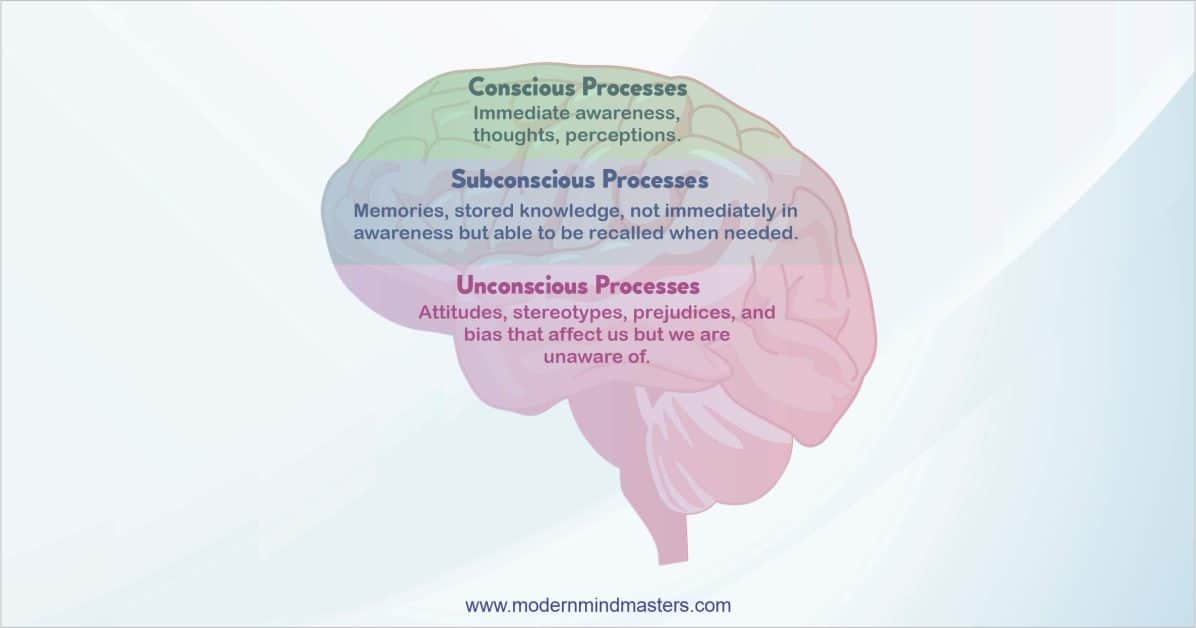
Where is the Subconscious Mind Located?
The mystery of the subconscious mind, and what makes it challenging to validate scientifically, is finding evidence of it in action.
Brain imaging research, however, has inferred that conscious and non-conscious thoughts (measured through subliminal stimuli) utilize different neural pathways.
One study found that consciously perceived stimuli activate prefrontal cortex regions, an area scientists generally agree influences cognitive control functions such as attention, impulse inhibition, prospective memory, and cognitive flexibility – actions we think of as conscious.
Another study induced non-conscious stimulation, in the form of subliminal stimuli, to measure neural activation in the brain.
While the researchers were expecting to find subcortical stimulation, such as the amygdala, hippocampus, and striatum, areas commonly associated with autonomic non-conscious activities, it was the right fusiform gyrus and right insula cortices that were most significantly stimulated across fMRI studies.
While the data is preliminary (the sample size was small), it suggests that perception of non-consciously perceived stimuli activates the anterior cingulate cortex (ACC) and insular cortex to form a basis for conscious perception.
These studies are in no way conclusive but seem to give weight to already existing evidence that what we deem non-conscious thoughts (unconscious or subconscious) activate different brain regions.
So while there is no such evidence for a physical location of a subconscious mind, what we envisage as a subconscious might instead be better defined as areas of the brain stimulating based upon conscious and non-conscious thoughts.
Does the Subconscious Mind Exist?
While Freud and Jung laid the foundations of subconsciousness, their theories now remain firmly speculative at best and based upon anecdotal case studies and subjective single observations.
Freud is now largely disregarded in scientific communities, but it is important to note that he did not have access to the scientific means of measurement that are now taken for granted. If he did, he may have revised his theories accordingly.
The most prominent issue surrounding the subconscious within modern science is the implication of a singular entity or cognitive store, of which there is no current evidence.
But as we saw in the section above, conscious and non-conscious thoughts, as detected in brain imaging research, appear to activate different areas and neural pathways within the brain.
More recently, in cognitive psychology, researchers have focused on automatic and implicit functions to describe things previously attributed to the unconscious.
This research may not support Freud’s concept of the unconscious mind, but it does offer evidence that things beyond our consciousness may still influence our behaviors.
The Subconscious Mind May Not be Tangible, But it Exists Conceptually
The subconscious and unconscious minds may not exist as separate and tangible entities, like other parts of the brain, such as the prefrontal cortex and amygdala, but they still exist at a conceptual level.
Emotions such as love may just be the result of chemical reactions in the brain, but it doesn’t mean we cannot identify ourselves as loving our family or spouse.
Love is a necessary way to communicate intense feelings for someone else; even if it boils down anatomically to chemical reactions, it still serves as a vital concept for communicating these reactions. It can thus be said to exist on a level necessary for society.
This is no different from the way we use computers. Your computer likely has around 2-4 billion transistors, executing at least 1 million tasks a second. Like the brain, we need a way to turn this immensely complicated network into something we can easily use for everyday decisions.
The concept of a subconscious mind serves this purpose; to simplify complicated decisions and actions in the most efficient way possible for the user. It may not exist physically, like the cursor on your computer screen only exists in lights from pixels, but it exists at a conceptual level useful for us.
As a result, there likely isn’t a physical area of the brain that we could call a subconscious or unconscious mind, rather, it is the firing of different areas of the brain that give this perception.
But that does not make it any less important for how we choose to use it to improve our happiness, success, and quality of life. Just because a person does not know the anatomical workings of the reproductive system doesn’t mean they can’t get pregnant. In the same way, we don’t need to know the anatomical workings of non-conscious processes to facilitate self-improvement.
Is the Subconscious Mind Powerful?
We know that subconsciousness is incredibly influential in most of our decisions. Harvard Business School professor Gerald Zaltman estimates that 95% of our purchase decision-making occurs subconsciously, a number that is often cited for all other non-conscious decisions.
Your subconscious mind regulates your body temperature to around 98 degrees Fahrenheit while maintaining your breathing and heart rate through a homeostatic impulse. It regulates your autonomic nervous system and balances the myriad of chemicals in your billions of cells without you consciously thinking about it.
Because it is so influential and powerful in almost every system in our body, learning to alter or improve it, if possible, would be a powerful ability.
Can we Influence the Subconscious Mind?
Science is still a way off from revealing the full scale to which we can influence the subconscious mind but we have enough anecdotal evidence of successful interference of our non-conscious thoughts to know that it is possible to some degree.
Subconscious Autosuggestion
Positive affirmations have been the basis of self-help for as long as the genre has been around. While positive affirmations are mostly regarded as wishful thinking, the fundamental principle, of changing the beliefs of your subconscious, does hold significant weight.
Autosuggestion, as pioneered by French psychologist Émile Coué, is the subconscious adoption of an idea or thought that you have originated yourself, usually through repetition of conscious thoughts.
His method relied on the belief that “any idea exclusively occupying the mind turns into reality”, limited by what is physically possible.
While many discredit autosuggestion, such as Skeptical Inquirer magazine criticizing the lack of falsifiability and testability of these claims, autosuggestion aims to mirror basic human learning mechanisms.
As children, we set our expectations of the world and the people around us through experiences. When touching a hot oven, this imprints in our subconscious memory that ovens are hot and we need to be careful.
In the same way, when we have bad experiences with doctors, we learn to fear going to the hospital. These memories and experiences, even when unlucky or unjust, define the world around us.
They are also very subjective; one’s bad experience with doctors may lead to a fear of hospitals, while another only has one positive experience and therefore does not worry about it.
Autosuggestion uses this same learning mechanism, but instead of relying on experiences stumbled upon naturally, we induce them consciously and with intention.
For example, a study found a 75% pain reduction, 71% functional improvement, and 83% stiffness improvement in the treatment of osteoarthritis which was attributable to the placebo/contextual effect.
These people were able to reduce the pain associated with arthritis by firmly believing in the ability to do so. Instead of using a placebo, however, autosuggestion seeks to use the knowledge of autosuggestion itself to induce positive change, so far as it is physically possible to do so.
Cognitive Biases
The ability to develop subconscious responses to specific stimuli, such as a fear of doctors from bad medical experiences, lead to cognitive biases.
Those raised by racist parents are very likely to develop racist biases themselves. Yet upon reaching adulthood, and removing themselves from such environments, many unlearn these racist biases.
As a result, we see the subconscious beliefs and memories rewriting themselves, thus suggesting that we can influence our subconscious beliefs when we become aware of them and wish to change.
Habits
Habits are another prime example of the subconscious mind constantly evolving. Those who have developed the habit of exercising every day, for example, find it much easier to go to the gym than those who have not.
Whereas the former does not have to think twice about going, the latter would have to muster significant willpower to overcome their limbic resistance against exercising.
By using habits to rewrite our subconscious thoughts, we can bypass internal resistance and change our views, biases, and actions.
Conclusion
Subconsciousness has a long and complex history, dating back to antiquity. While Freud and Jung pioneered the unconscious mind as a tangible concept that affects most decisions without our conscious input, science increasingly suggests that an unconscious mind likely does not physically exist.
We should learn to differentiate a subconscious mind from subconscious thoughts and processes. A “mind” suggests a physical and mysterious cognitive store that likely doesn’t exist. Yet we know that certain stimuli, such as subliminal messaging, induce different areas of the brain than the conscious prefrontal cortex.
When referring to the subconscious mind, therefore, we must acknowledge that we are referring to a loose concept to conveniently summarize all non-conscious thoughts, feelings, and memories that lie outside our conscious awareness, and of which we do not yet fully understand.
When speaking scientifically, this concept is not sufficient to describe the complex workings of the brain. When speaking in terms of self-improvement, however, it provides a convenient way to reference non-conscious thoughts that influences our behaviors, and something we should aim to improve.

What is Psychedelic Therapy, and Can It Improve Your Mental Health?
Psychedelic therapy is an emerging treatment option for mental health conditions, where psychedelic drugs are combined with talk therapy to rewire certain parts of the brain.

The Ultimate Guide to Personal Development
If you are not learning, you’re not earning. This guide to personal development will provide the knowledge and tools to take you to the next level.

Is Meat Good For You?
For years we were told meat was bad. The truth? Is meat good for you — absolutely. It’s one of the most powerful health foods
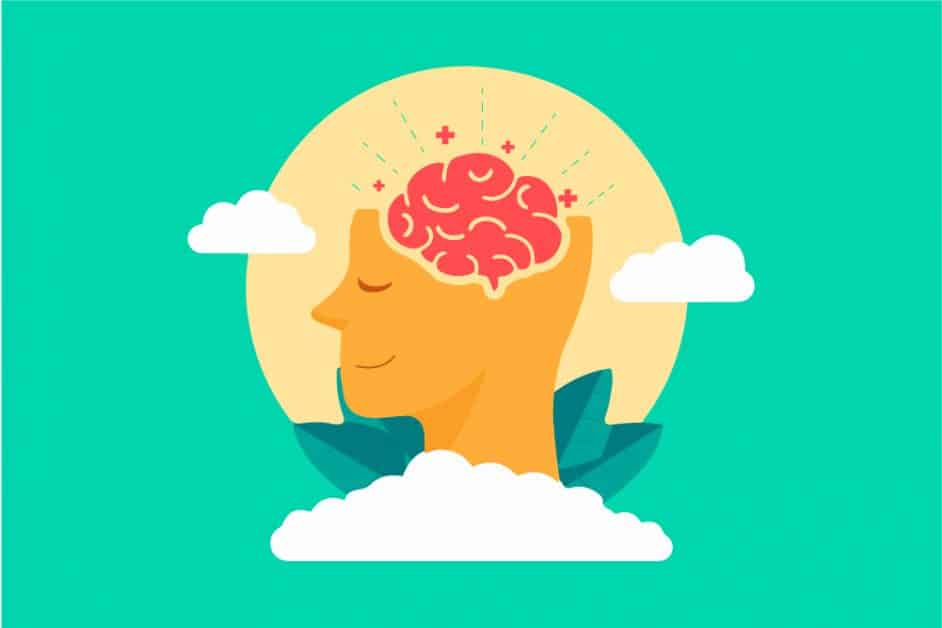
5 Simple Steps to Improve Your Well-being
There is no magic pill to become happier overnight, but there are simple steps we can easily perform that will boost our well-being over time.
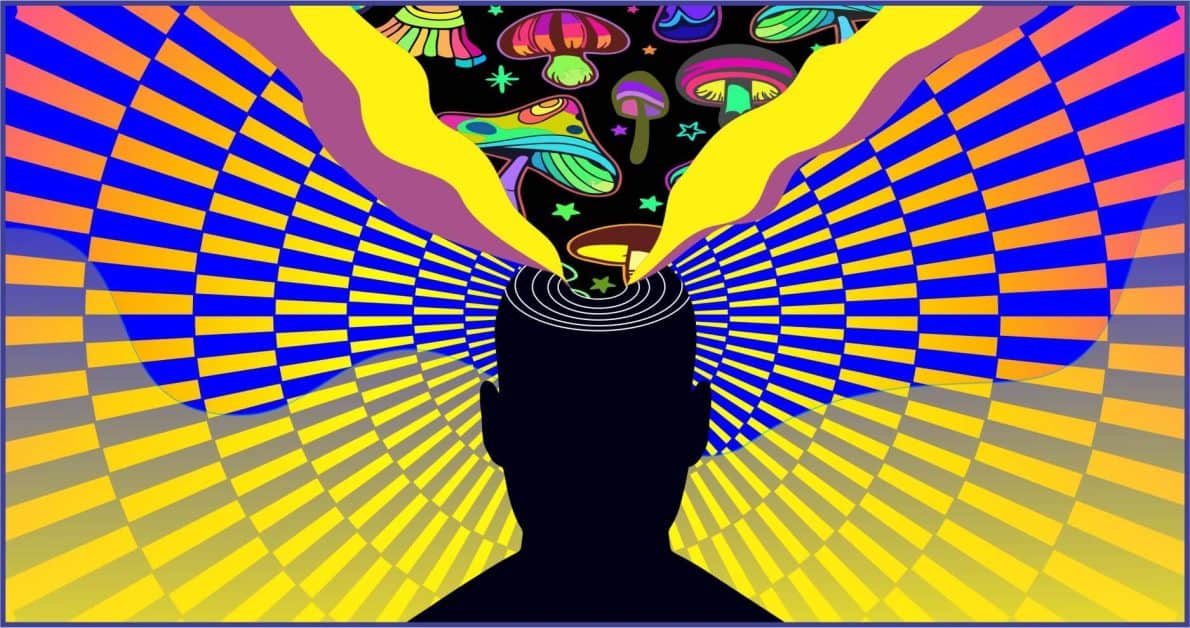
5 Ways Psilocybin Can Help Treat Mental Health
Psilocybin can help treat mental health by altering neural connections, reducing activity in parts of the brain causing anxiety, allowing new healthier connections to form.

7 Simple Habits For Consistent Change
Success stems from many small wins compounded over time – the key to this is consistency, which is achieved though the use of strong habits.